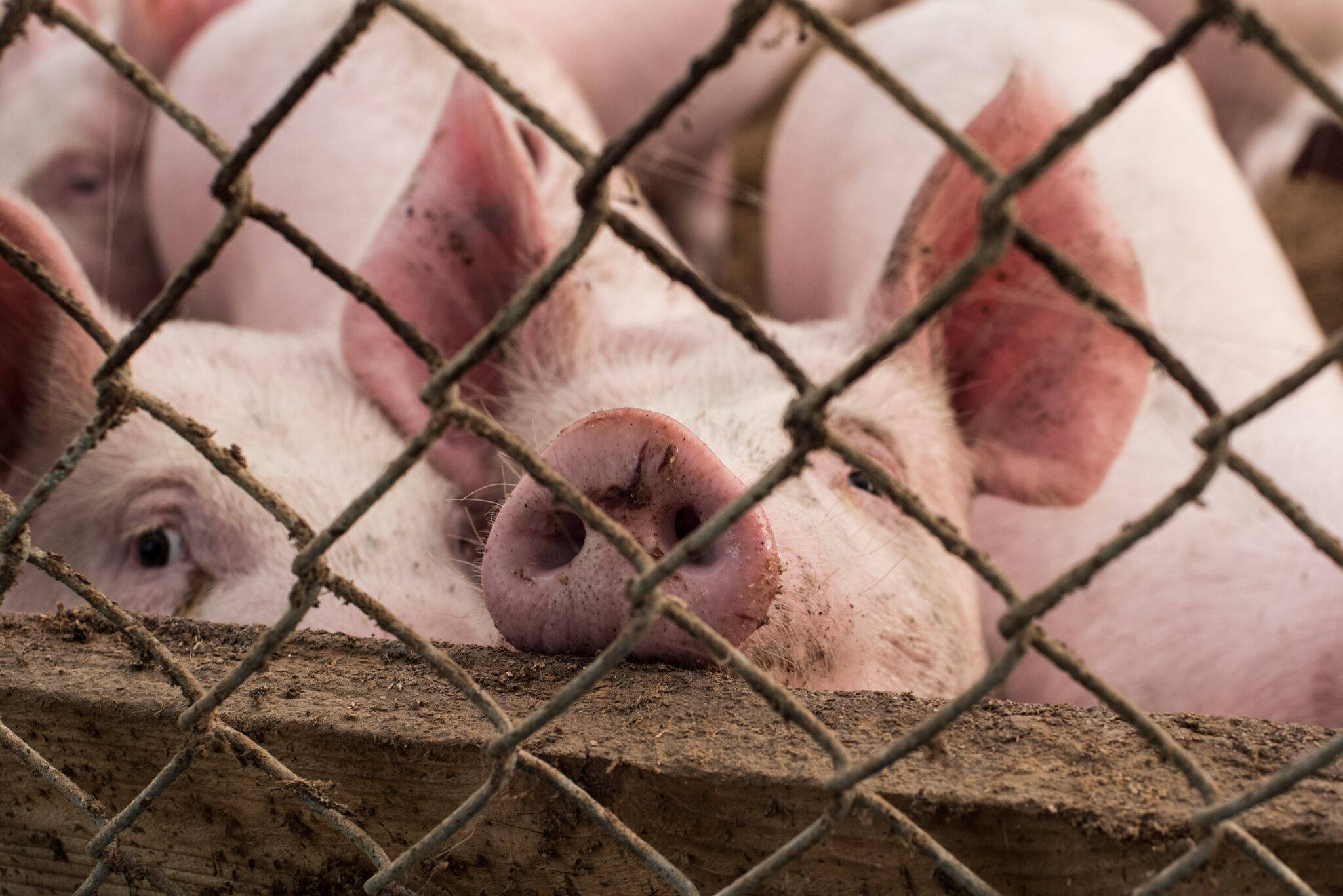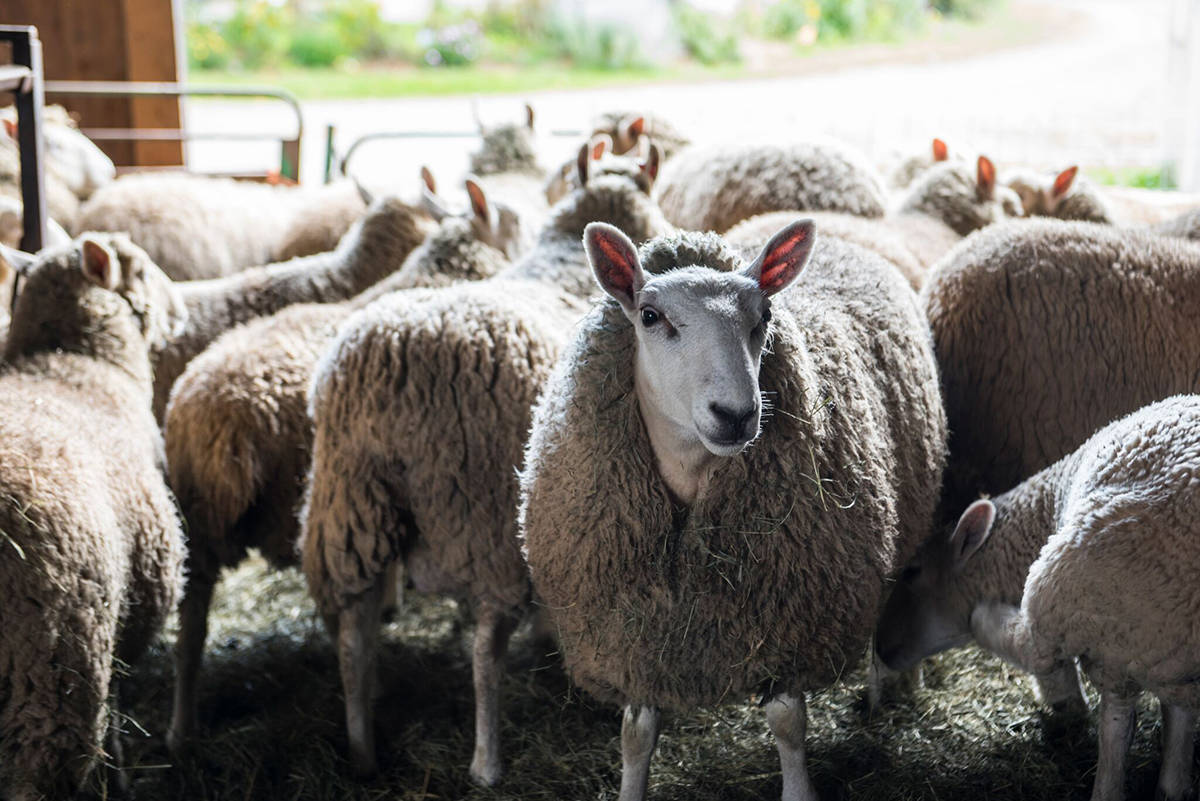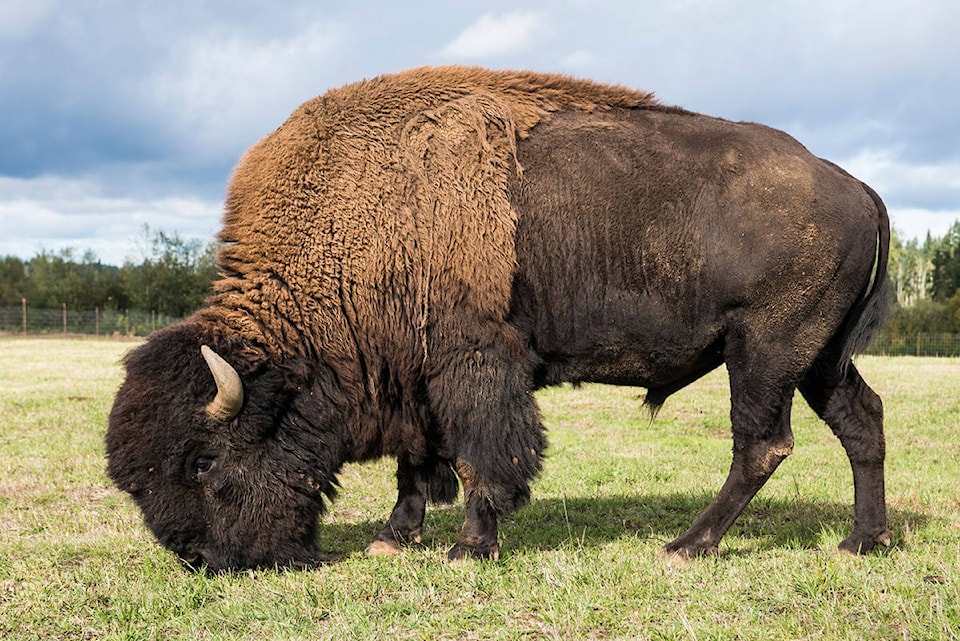Janice Hayward
Special to The Record
The Comox Valley is rich in agriculture. Google it, drive around, or ask around and you will learn about local seasonal and year-round products.
Many people know the source of their fruits and veggies but what about the meat? I am not asking which store you purchased it from, I am asking which farm. Is it B.C.? Is it Canadian? Do you know how the animals are treated? Do you know what they are fed or where they are butchered?
We are fortunate to live in the lush, fertile Comox Valley where numerous farmers raise meat on the hoof to bring quality, nutrition and taste to our table. Read on to learn about three Comox Valley meat farmers.
Tannadice Farms
Allen and Heather McWilliam, the owners of Tannadice Farms, raise pigs. Forty-two years ago they purchased their farm at 3465 Burns Road in Courtenay. They chose the Comox Valley for its agriculture land. Allen McWilliam was an accountant but he claims farming is a genetic problem; his mother’s side of the family were all farmers, his sister and her children are farmers and Allen himself was drawn to the farm life.
“It is a passion of mine and my wife,” he declared.
Eventually McWilliam retired to farm full-time. He admitted farming has its ups and downs with definitely more ups. Their first endeavour was Angus cattle. It was a success. The pigs were a disaster story.
“We absolutely did everything wrong,” McWilliam explained. “We bought the wrong breeding stock.”
They let the pigs and pig farming go but something drew them back to the challenge. The second time they decided to bite the bullet and do it properly. Learning from key people McWilliam managed to build a working operation. They kept the cattle and slowly yet deliberately expanded the pig setup. Through blood, sweat, and tears Tannadice Farms became a pork producing farm.
“It didn’t happen overnight,” added McWilliam.
Their pigs are cross between a Large White and a Landrace. McWilliam is introducing Duroc boars that produce meat that is juicer, tastes better, and cooks easier. Pig farming is a science when choosing sows and boars to produce a pig that will result in a finished product that pleases the consumer.
The pig food, mostly grains from B.C., is produced by Top Shelf Feed in Duncan.
“The magic of the mix is a cross between science and art,” said McWilliam.
Nutritionists are engaged to ensure that proper feed is provided at the right time, to a lactating sow or the growing and finishing of a pig. The focus is to keep the pigs in good condition and healthy at all stages of their life. McWilliam gives his pigs quality of life; good food, fresh air, and clean pens.
The farm maintains 70 or 80 sows and maintains 700 to 800 pigs at any given time. McWilliam explained that Tannadice is a farrow to finish operation. All the pigs are born on the farm.
“We feed them out here, nothing leaves the farm for finishing. When a pig reaches 230 pounds it goes to the processor, and we use Gunter Brothers for our processing.”
Thirty pigs a week are sent to Gunter Brothers Meat Co Ltd. located on Ledingham Road in Courtenay.
McWilliam further explained that the processor completes everything on his instructions. He tells Gunter Brothers what cuts he wants from the pig. He in turn markets the meat to retailers, restaurants and consumers.
McWilliam finds it gratifying when customers recognize the Tannadice Farms logo on his truck and declare how much they love his pork and sausages.
Visit the onsite farm store 9 a.m. –noon on Saturday. For more product information call 250-338-8239, or visit their website or find them on Facebook.
Glen Alwin Farm
Glen Alwin Farm, located at 6126 N. Island Highway, Courtenay, has been serving the Comox Valley since 1884, when William Chandler Smith made his start. The property was later divided between his 10 offspring with the Glen Alwin section going to son James and eventually James’s son, the late Tom Smith. Tom’s wife Jo Smith and daughter Helen Nixon currently work their historic farm.
“We used to milk Ayrshire cattle,” Smith stated. “We were milkers.”
Due to uncertainty between the federal government and the dairy industry in 1989, the Smiths decided to sell the dairy cattle. There were generations of Ayrshires on the farm. The lineage of some could be traced back to cattle that Jo Smith owned when she was just 11. It was a tough and emotional decision.
With the dairy cattle gone, the Smiths turned their attention to beef cattle and lamb. Today the farm is alive with Limousin beef, Border Cheviot sheep and Dorset sheep. Heading north on the Island Highway, just past Smith Road you can view the cattle grazing on the land below the highway and the sheep nibbling in the field above the highway.
Smith has always liked the Limousin beef and she states that they do wonderfully on grass and silage. There is no grain in their diet and Smith says this makes for leaner meat.
The Border Cheviots and the Dorsets are distinct from each other.
Dorsets will breed any time of year, while the Border Cheviots breed in relation to the amount of daylight and darkness they are exposed to. The diet for the lamb and sheep consists of grass, silage, and hay.
With 80 ewes, two rams, a Dorset and a Border Cheviot, Glen Alwin Farms can produce approximately 120 lambs annually. The cattle herd of 48 includes breeding cows, yearlings and calves.
The cattle and the lambs are processed at Gunter Brothers. Smith and the Gunters have been doing business for generations.
“Our animals are treated very well,” Smith explained. “Roaming free. Not stuffed in a barn. They have fresh water in every field. They are happy, healthy animals resulting in a better meat product. Our animals are not stressed by long truck rides.”
Smith attends the Saturday Comox Valley Farmers’ Market and manages their onsite market at the farm, where you can find freezers full of your favourite beef and lamb cuts.
When asked why she keeps farming, Smith smiled and said, “We love it. It’s a lifestyle. Every bit we make is put back into the farm.”
Smith boasts that her customers keep coming back. For more product info call 250-338-3525, or visit their website or find them on Facebook
Island Bison Ranch
Seven and a half years ago, 3100 Hamm Road in Black Creek was an insignificant, undiscovered farm. There were two barns, a fence, and 30 bison. And, seven and a half years ago Marc Vance had no idea that getting lost in Black Creek would lead him to a dream come true - a bison farm on Hamm Road. Twelve months after the find, he and his wife, Lisa, built Island Bison Ranch, starting with a well and a house for the family.
From successful business owner in the city, to country farmer, Vance reveals with a smile that when his first tractor was delivered just over six years ago, he no idea how to start it. He sat on it for half an hour before calling the dealer to sheepishly ask, “Can you run me through this again?”
Island Bison Ranch raises bison, Asian water buffalo, and Berkshire pigs.
As with most farmers, they farm from the heart. For Vance, there is the extra privilege of working with bison. “They were almost extinct in 1890. Less than 1,000 of them,” Vance shared. “There is a sense in a small way of making a difference.”
He believes that if their meat animals have a happy journey, you will have happy meat.
“I know it sounds cheesy,” he admits, “but it is true.”
Research, observing, and just figuring it out is how Vance learned to treat his animals.
Bison need herd structure as if they were in the wild. There is a patriarch, a matriarch, and a pecking order.
“We farm bison in a way that works with that,” Vance explained. “With bison, the more you leave them alone, the better they do - give me my grass, give me my herd and leave me alone.”
The bison are not chased to herd them. It is too stressful. To move them from one field to another, their food and water is moved and gates are opened and closed. Planning is crucial. Sometimes it takes two days to get them to where you want them.
“Water buffalo are the polar opposite to the bison,” Vance stated.
They like to be scratched and petted. They each have an ear tag with their name and each one knows their name.
“Happy Water Buffalo say give me grass, give me attention and give me more grass,” laughed Vance.
The male water buffalo are purchased at 10 days old. Vance and his family bottle feed them for four to five months then they are raised on grass. When grass is scarce, the bison and buffalo are fed haylage, which Vance says is more palatable than dry hay.
The bison herd size can range from 170 – 200 depending on the time of year. Water buffalo herd is 100 and the pigs average 50 in number.
Gunter Brothers is the butcher for Island Bison Ranch. The bison go to slaughter at 24 to 30 months, the water buffalo at 22 to 24 months and the free-range pigs at six to seven months. Vance ensures that all his animals that go to Gunters go happy.
“Bison is purchased by consumers seeking leaner lower cholesterol, nutrient dense red meat alternatives,” Vance stated.
He added that they love our products and they love how we treat our animals.
“People are motivated to buy meat from humanely treated, happy animals.”
Island Bison Ranch operates its own farm store Monday to Saturday from 9 a.m. to 5 p.m.
For more information call 250-650-9303, visit the website (islandbison.com) or find them on Facebook.
Note: All the farmers above have regulations that are adhered to for health, traceability, and audit purposes. Plus, each farmer extends a personal invitation for you to call or visit their farm to learn first-hand where and how your local meat is raised.





